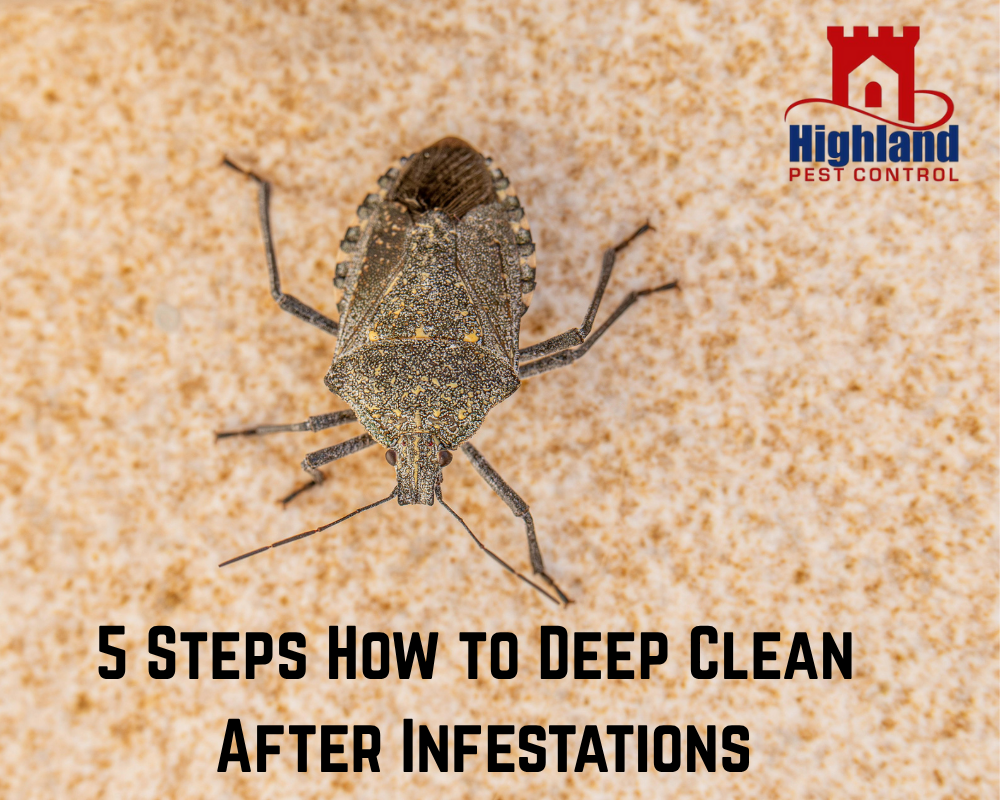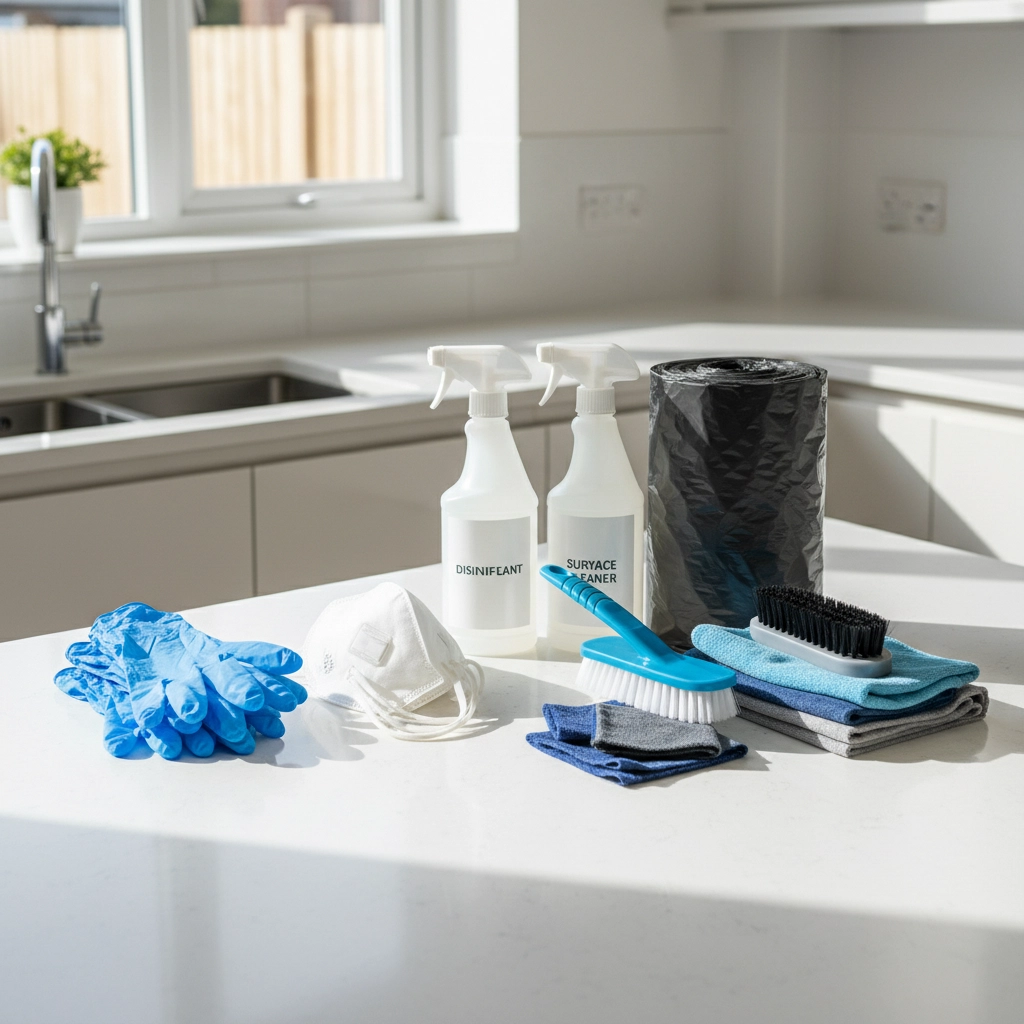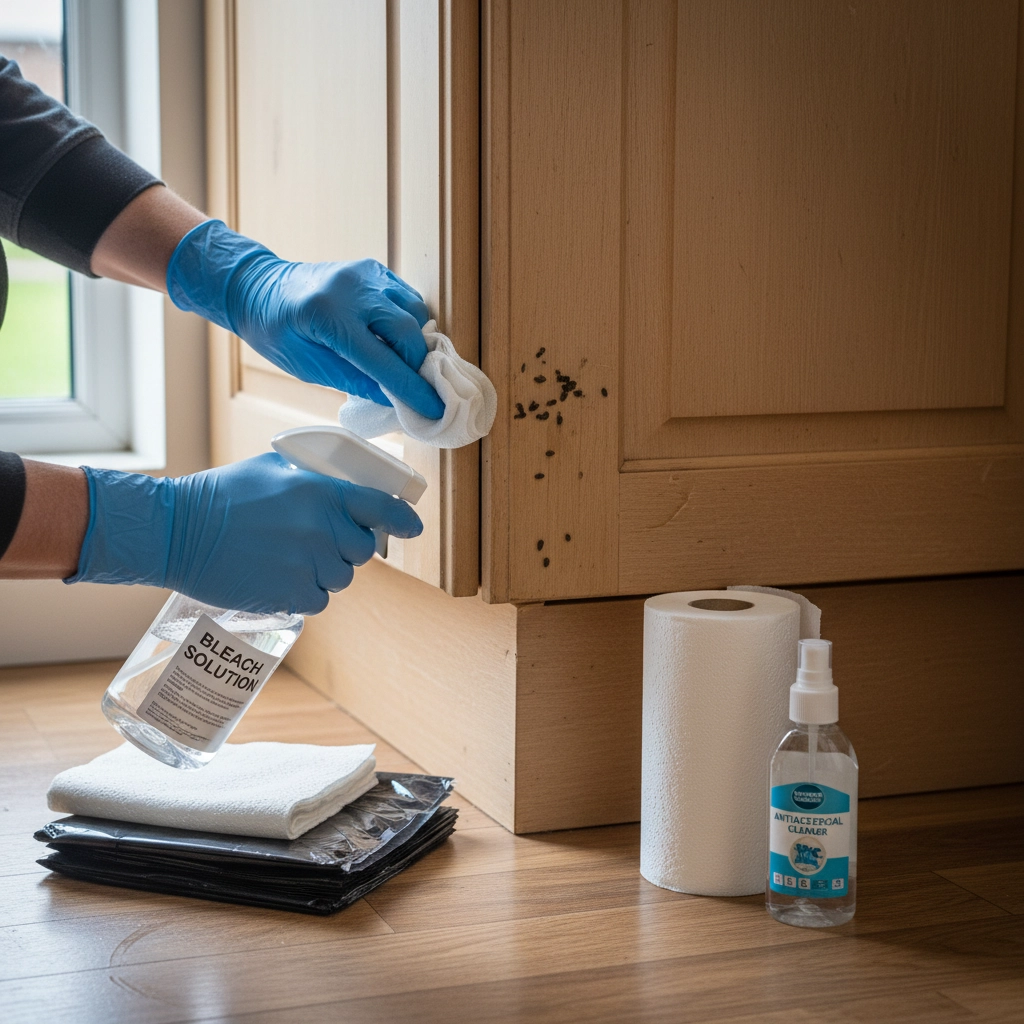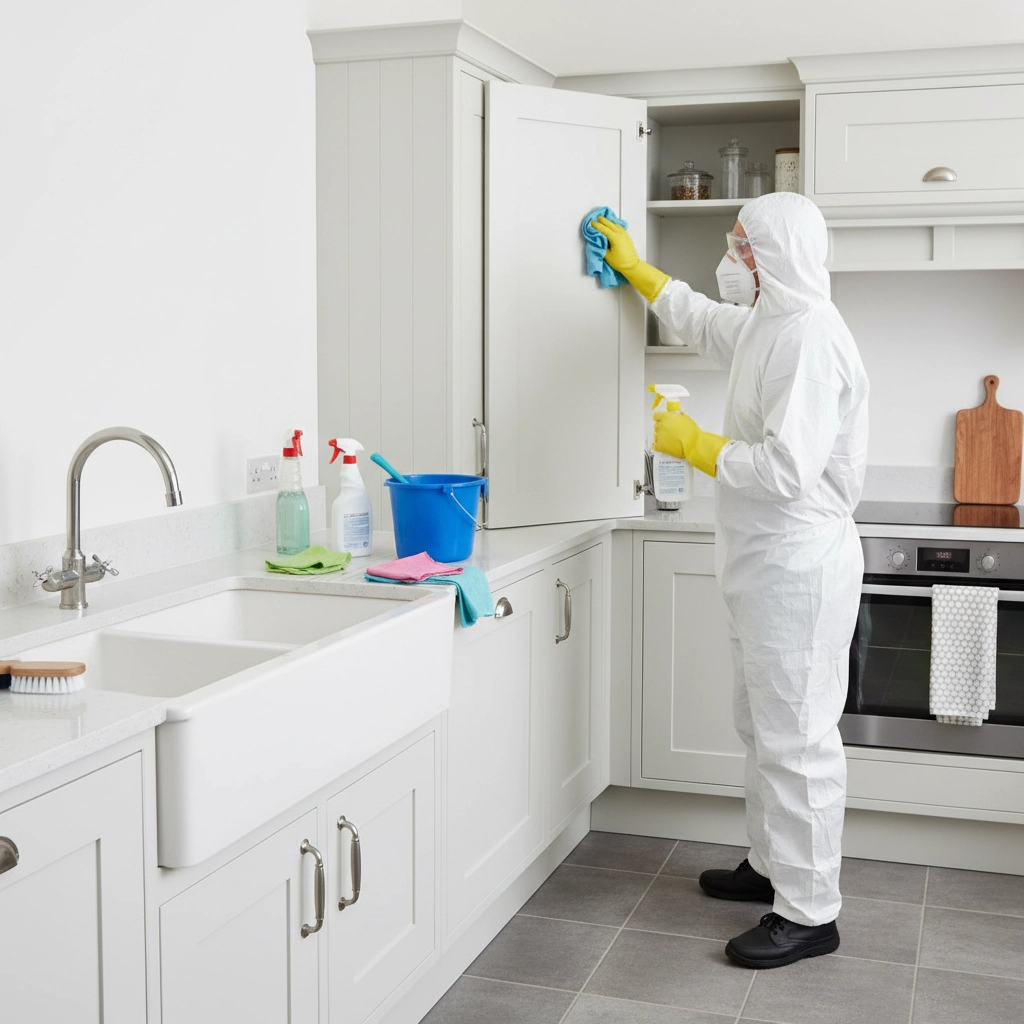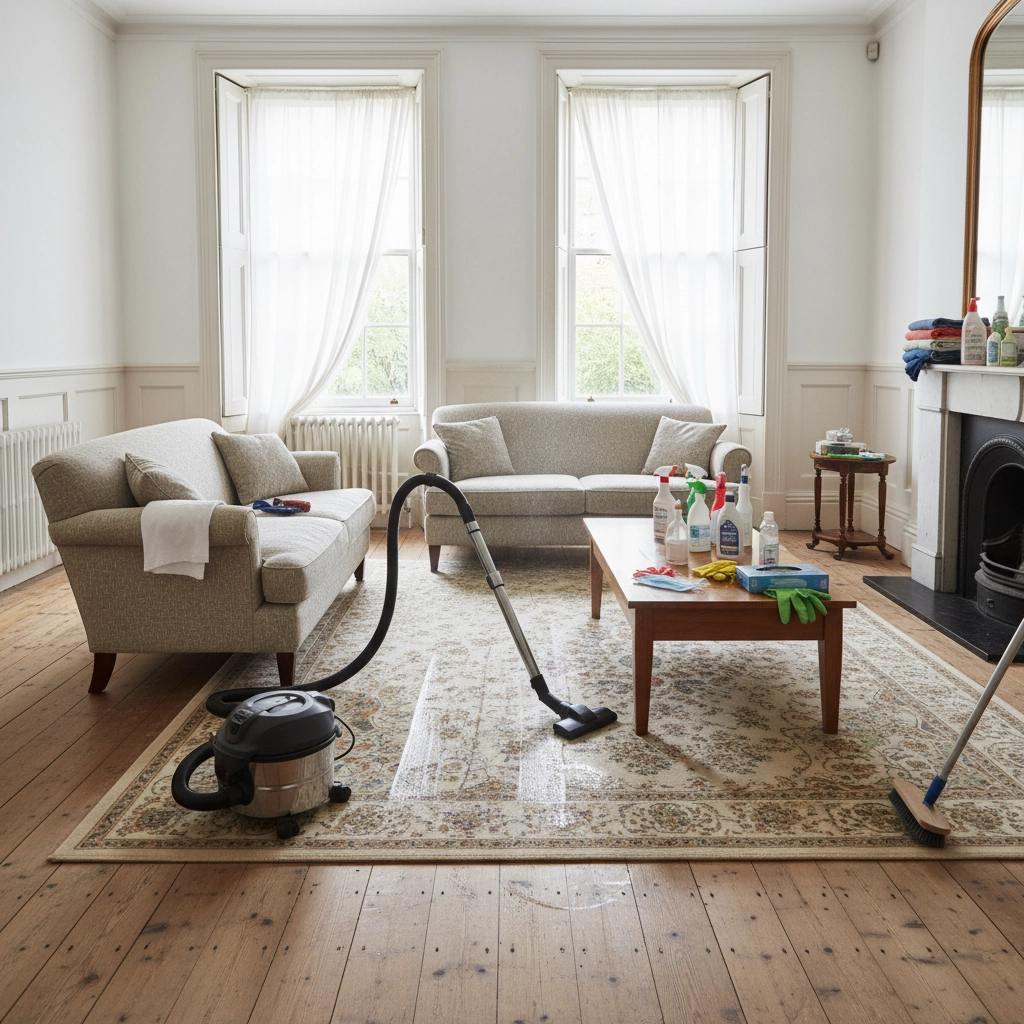Discovering a pest infestation in your home is stressful enough, but the work doesn't end when the last unwanted visitor has been eliminated. Whether you've dealt with rats in your loft conversion, ants marching through your kitchen, or bed bugs in your Victorian terrace, proper deep cleaning after an infestation is absolutely crucial for your family's health and preventing future problems.
Many homeowners across the UK make the mistake of thinking a quick hoover and wipe-down will suffice. Unfortunately, pests leave behind far more than meets the eye: droppings, bacteria, allergens, and even structural damage that requires systematic attention. Without proper cleaning, you're not only risking recontamination but potentially exposing your family to serious health hazards.
This comprehensive guide will walk you through exactly how to deep clean your home after any pest infestation, using methods that work specifically for UK homes and conditions. By following these five essential steps, you'll restore your property to a safe, hygienic state and create an environment that's inhospitable to future invasions.
Step 1: Safety First – Gear Up and Prepare Your Space
Before you tackle any cleaning, protecting yourself is paramount. Pest remnants can harbour dangerous bacteria, allergens, and even parasites that pose serious health risks to you and your family.
Essential protective equipment includes:
- Disposable nitrile gloves (double up for extra protection)
- FFP2 or FFP3 face masks to prevent inhaling contaminated particles
- Long-sleeved clothing and trousers you can wash immediately afterwards
- Safety goggles if you're dealing with overhead areas like lofts or roof spaces
- Wellington boots or shoes you can easily disinfect
Start by opening every window in your home: proper ventilation is crucial for diluting airborne contaminants and preventing you from breathing in harmful particles. This is particularly important in older UK properties where natural airflow might be limited.
Gather your cleaning arsenal: heavy-duty bin bags, a vacuum cleaner with a HEPA filter, household bleach, antibacterial sprays, scrubbing brushes, and plenty of disposable cloths. For particularly stubborn odours common after rodent infestations, consider purchasing an enzymatic cleaner from your local hardware store: these biological cleaners break down organic matter at the molecular level.
Top tip: Never use a standard vacuum without a HEPA filter when cleaning after pest infestations. Regular vacuums can actually spread contaminated particles through the air, making the problem worse.
Step 2: Remove All Visible Signs of Infestation
Now comes the methodical removal of everything pests have left behind. This step requires patience and thoroughness: rushing through it means you'll likely miss something important.
For larger debris like nests or dead pests:
- Work systematically through each room, checking corners, behind furniture, and in storage areas
- Carefully pick up nesting materials with your gloved hands, disturbing them as little as possible to avoid releasing spores or bacteria into the air
- Place everything directly into heavy-duty bin bags: don't let debris sit around in bowls or boxes
- Seal bags immediately and take them straight to your outdoor wheelie bin
Dealing with droppings and smaller debris:
- Never sweep or vacuum droppings dry: this launches particles into the air where you can inhale them
- Instead, spray the area generously with a bleach solution (1 part bleach to 10 parts water) and let it soak for at least 10 minutes
- Use disposable cloths to wipe up the softened material, working from the outside of the contaminated area inwards
- Double-bag all contaminated cloths and dispose of them immediately
Pay particular attention to areas where UK pests commonly hide: behind kitchen units, in airing cupboards, under stairs storage, and in the gap between your kitchen worktop and wall: a favourite spot for mice in British homes.
Step 3: Deep Clean All Contaminated Surfaces
With visible debris removed, it's time for the deep clean that will eliminate bacteria, viruses, and lingering odours. This step is where many homeowners fall short, but it's absolutely critical for complete decontamination.
Kitchen areas require special attention:
- Remove everything from cupboards and drawers, inspecting each item for contamination
- Wipe down all internal surfaces with antibacterial cleaner, paying particular attention to corners and crevices
- Clean behind appliances: pull out your fridge, washing machine, and cooker to access hidden areas where pests often travel
- Disinfect your sink, taps, and the area around your boiler (a warm spot that attracts many pests in UK homes)
For hard surfaces throughout your home:
- Use a strong disinfectant solution on all surfaces pests may have contacted
- Don't forget light switches, door handles, and skirting boards: areas people often overlook
- Clean walls up to at least one metre high, as many pests leave invisible traces as they move along them
- Wipe down radiators and their pipes, common highways for rats and mice in British properties
Carpets and soft furnishings need special care:
- Vacuum thoroughly using overlapping strokes, paying extra attention to edges and corners
- Consider hiring a professional carpet cleaner with hot water extraction: the high temperatures kill bacteria and allergens
- For curtains and soft furnishings, wash everything possible at the highest temperature the fabric can handle
- Items that can't be washed should be professionally cleaned or, in severe cases, replaced entirely
Step 4: Room-by-Room Deep Clean Strategy
Different rooms in your home require tailored approaches based on how pests typically use these spaces and what contamination risks they present.
Bedrooms – Your Personal Sanctuary:
Strip all bedding and wash it at 60°C or higher: this temperature kills dust mites, bed bugs, and bacteria. In older UK properties with single-glazed windows, check window frames and sills thoroughly, as these are common entry points for various pests.
Vacuum mattresses using the upholstery attachment, paying particular attention to seams and the head of the bed. For severe infestations, consider encasing mattresses in protective covers available from most UK bedding retailers.
Living Areas – High Traffic Zones:
Remove cushion covers from sofas and armchairs for washing. Vacuum under and behind furniture: many UK homes have built-in cupboards and alcoves that create hidden spaces perfect for pest nesting.
Clean remote controls, games consoles, and other electronic devices with disinfectant wipes, as these items are frequently handled and can harbour bacteria.
Bathrooms – Moisture Control Zones:
Pests love moisture, making British bathrooms particularly vulnerable. Clean behind toilets, around pipe entry points, and any gaps around your bath or shower tray. These areas often harbour pest droppings that go unnoticed during regular cleaning.
Fix any leaking taps or seals immediately: even minor moisture problems can attract new pests within days of completing your deep clean.
Utility Areas and Storage Spaces:
Don't neglect your utility room, garage, or loft space. These areas often have the worst contamination but receive the least attention. Check around your boiler, water heater, and any stored items. Many UK homes have combination boilers in kitchen cupboards: a favourite hiding spot for various pests.
Step 5: Seal Entry Points and Create Long-Term Protection
Your final step combines immediate protective measures with long-term prevention strategies. This stage is crucial because it addresses the root cause of infestations rather than just treating the symptoms.
Immediate sealing priorities:
- Inspect the external walls of your property for cracks, gaps around pipes, or damaged pointing: common problems in older UK housing stock
- Use expanding foam or steel wool to block holes larger than 6mm (anything smaller won't admit mice)
- Check around window and door frames, particularly in period properties where settling may have created gaps
- Seal areas where utility pipes enter your home: often poorly finished in UK properties and a major entry route for pests
Kitchen and food storage protection:
Transfer all opened food items into airtight containers: glass or heavy plastic storage jars work best and are readily available from UK supermarkets. Pay particular attention to pet food, which is often stored in opened bags that attract pests.
Install door sweeps on external doors and check that they create a tight seal. Many UK homes have gaps under doors due to carpet changes over the years.
Create an ongoing maintenance schedule:
- Monthly inspections of vulnerable areas (loft spaces, utility rooms, under kitchen units)
- Weekly cleaning of areas where crumbs might accumulate
- Seasonal checks of your property's exterior for new entry points
- Annual professional pest inspections, particularly for older properties
Long-term environmental changes:
Consider upgrading storage solutions in your kitchen and utility areas. Modern UK building standards emphasise sealed storage, and retrofitting these solutions can dramatically reduce future pest problems.
Address any ongoing moisture issues: repair leaking gutters, improve ventilation in bathrooms, and ensure your loft space is properly ventilated to prevent condensation that attracts pests.
When to Call in Professional Help
While this guide enables most homeowners to effectively deep clean after pest infestations, certain situations require professional intervention. If you're dealing with widespread contamination, struggling with persistent odours, or discovering structural damage, professional pest control cleaning services can provide specialised equipment and expertise that goes beyond standard household cleaning.
Professional services have access to hospital-grade disinfectants, industrial cleaning equipment, and the experience to identify problems that untrained eyes might miss. They also understand the specific challenges presented by UK housing stock and local pest species, ensuring your cleaning efforts address the right issues comprehensively.
The investment in thorough post-infestation cleaning pays dividends in preventing future problems, protecting your family's health, and maintaining your property's value. By following these five essential steps, you're not just cleaning: you're creating a fortress against future infestations while ensuring your home remains the safe, comfortable space your family deserves.
Remember, successful pest management is an ongoing process, not a one-time event. The deep cleaning protocols outlined here form the foundation of long-term pest prevention that will serve your household for years to come.

